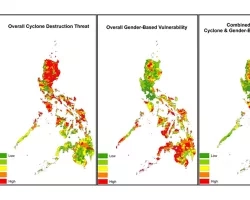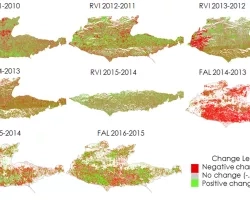Maldives Climate II (Spring 2023)
Team: Ben Dahan (Project Lead), Evan Barrett, Tiffany Hsu, Gabriel Halaweh
Summary: The Republic of the Maldives is a low-lying island nation in the Indian Ocean which has experienced rapid urbanization, landcover changes, and sea level rise over recent years. The growth of tourism, coastal erosion, and urbanization all have driven land reclamation efforts across many islands. As in situ landcover change monitoring has proven difficult across the vast archipelago, the NASA DEVELOP team collaborated with the Maldives Ministry of Environment, Climate Change, and Technology; USAID; and the U.S. Department of State to utilize Earth observations to predict sea level rise impacts on coastal infrastructure. The team used a supervised classification algorithm within Google Earth Engine to create land use maps and time series analyses of nine islands and atolls using imagery from Landsat 7 Enhanced Thematic Mapper Plus, Landsat 8 Operational Land Imager, Sentinel-2 Multispectral Instrument, and PlanetScope, covering a combined period of 2000 through 2023. Additionally, the team projected coastal inundation with a modified deterministic Bathtub model utilizing elevation data from CoastalDEM and 2050-2100 Shared Socioeconomic Pathway scenarios identified in the NASA Sea Level Rise Projection Tool. The team found that islands undergoing urban growth experienced a 23% decrease in vegetation between 2014 and 2022. Furthermore, the model predicted that 57–63% of the study area’s built environment has a chance of inundation by 2100 under the low and high sea level scenarios. These analyses demonstrate how remote sensing can be used to both track land use changes over time and project how coastlines will be affected by sea level rise.
Deliverables:



